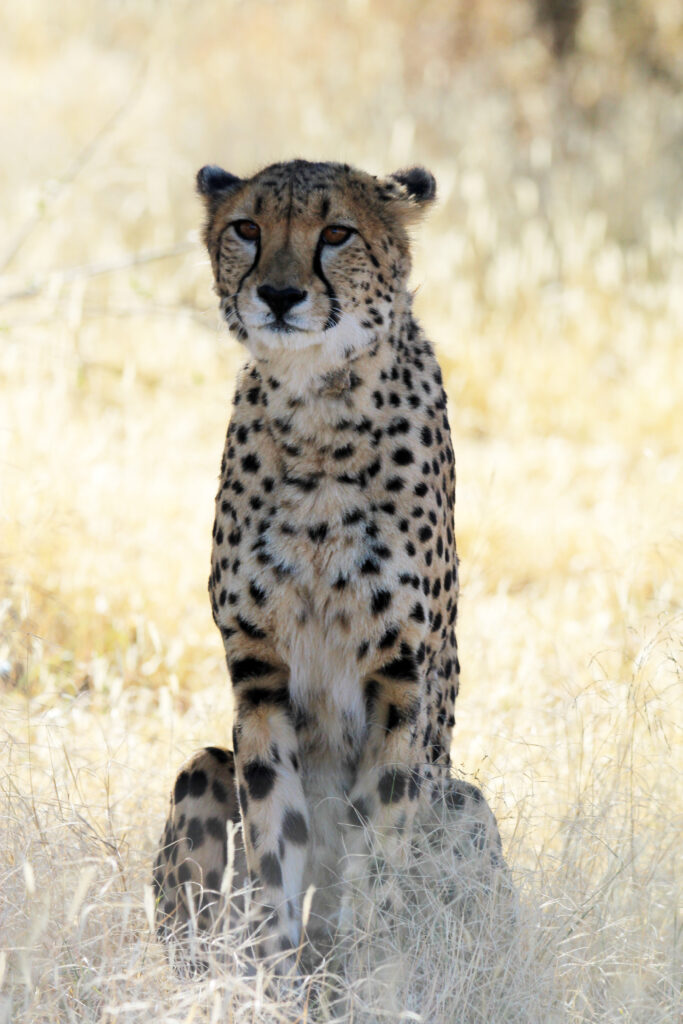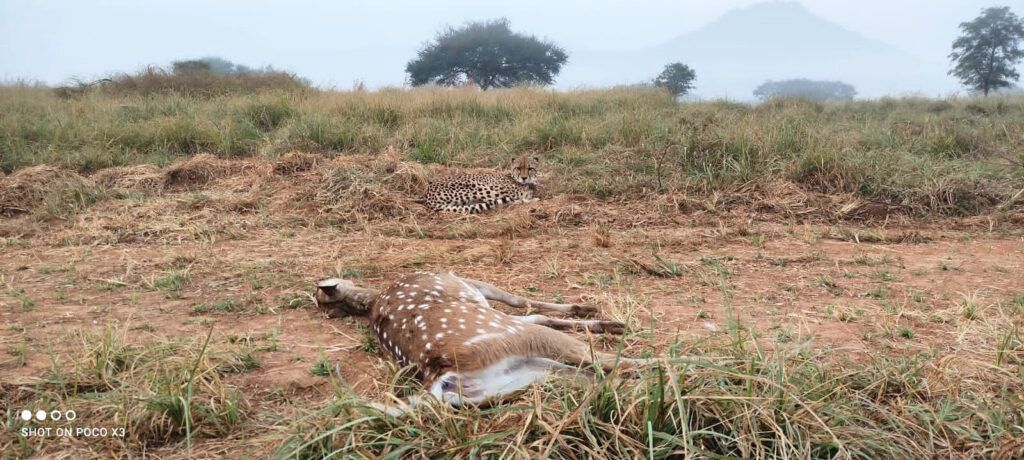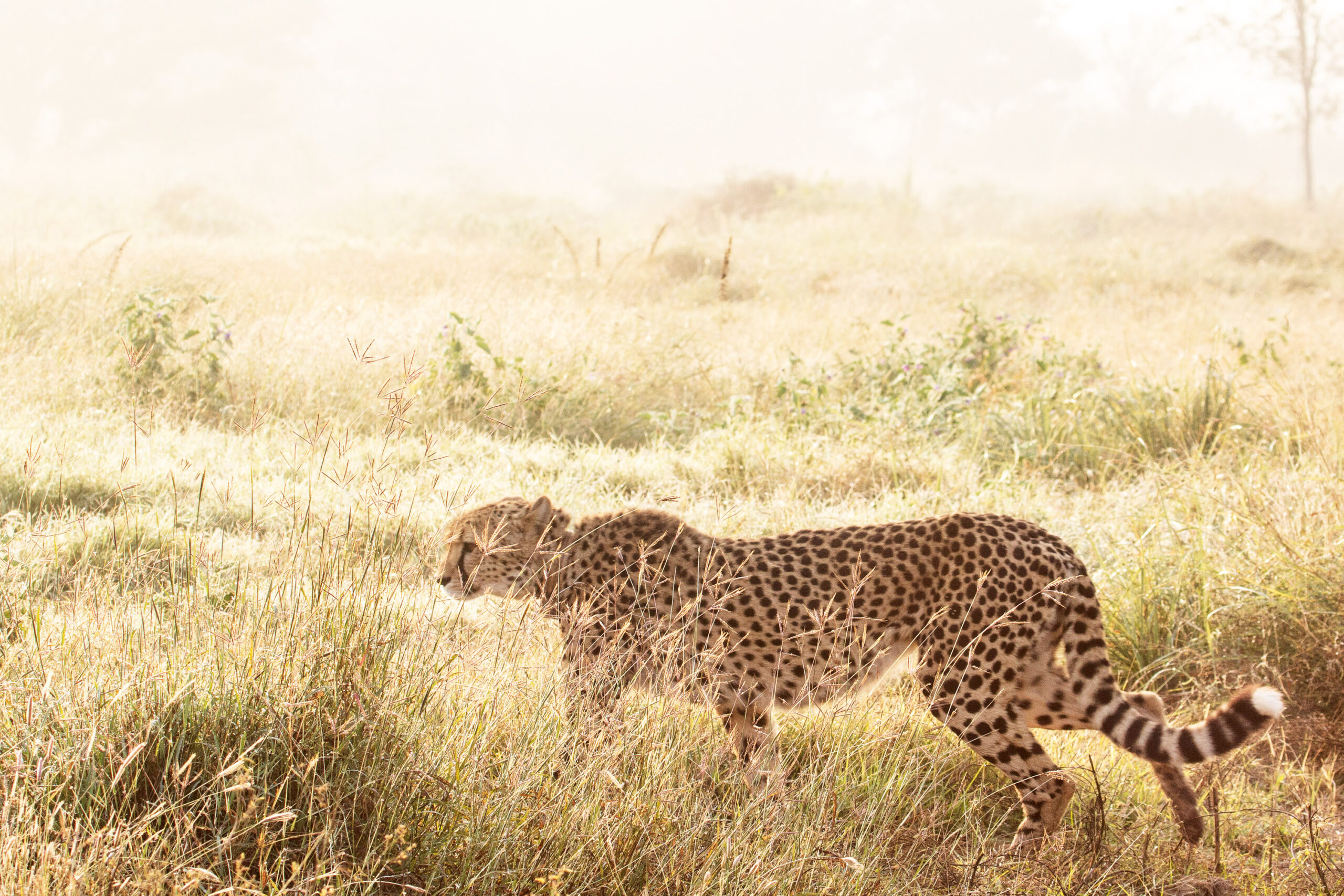Conflicting reports emerge on possible lapses and cause of death.
NEW DELHI: The death of a five-and-a-half year old female cheetah, Sasha, who was among the eight felines brought to India on 17 September last year from Namibia, has generated questions, both in India and Namibia, among government quarters and wildlife enthusiasts on whether they were lapses on the part of the Madhya Pradesh state government in handling the Cheetah.
This unfortunate event, if not tackled swiftly and lapses that led to the death of the Cheetah identified, is likely to discourage donor countries from sending Cheetahs to India in the future. What has added more twist to the entire development is that while the Madhya Pradesh government has stated that the Cheetah was already suffering from kidney-related ailment much before she was brought to India, this has been denied by the Cheetah Conservation Fund (CCF) which stated that her death was likely caused by a “highly stressful situation”.
On 27 March, the Madhya Pradesh government, in its official press release, stated that after Sasha was found to be lethargic on 22 March, she was examined and found to have infection in kidney. After this, as per the press release, the government officials reached out to the CCF. As per the medical records shared by the CCF, the release claimed, the last blood test done on Sasha on 15 August in Namibia had found that her creatinine level was 400.

This mention of her creatinine level being 400, a Bhopal-based official source said, was to convey that the Cheetah was already suffering from a kidney infection much before she was airlifted to India and hence, there was no administrative lapses on the part of the Indian officials that would have led to her death.
However, Susan Yannetti, Senior Advisor, Strategic Initiatives at CCF, told The Sunday Guardian that her death has come as a “surprise” as the day before she died, she was reported as being alert and active. According to her, she had no infection, or abnormalities when she was checked before being sent to India and her death was likely caused due to the complications that arose due to “highly stressful situations”.
“After she fell ill, this had led to questions about her health history. In general, Sasha did not show clinical signs of any disease while she was in Namibia. She was, therefore, considered to be a good candidate for translocation to India and release into the wild as part of the reintroduction programme. All results for her health examinations in Namibia were shared with the international team involved in the Indian reintroduction, as well as the Namibian and Indian authorities,” Yannetti said in the response shared with this newspaper.
“While Sasha’s kidney values were slightly elevated (410 μmol/L, which is slightly above the upper limit of 376 μmol/L), she showed no clinical signs, had no sign of infection, and her ultrasound showed no abnormalities; therefore, this was attributed to her being slightly dehydrated at the time of the examination. Blood becomes more concentrated from dehydration; so values become more concentrated, but these values reduce with sufficient hydration,” she said while responding to claims that she was already suffering from kidney infection much before being brought to India.
According to the CCF, all the eight cheetahs were selected only after they meet a rigorous criterion; all cheetahs were wild born, clinically healthy and in prime age (2.5 to 6 years old), the genetics of the animals were also considered, as they were selecting the best candidates to be founder stock for the new population.
“All cheetahs underwent thorough health examinations, which included physical examination/observation, blood draws and ultrasound. Ultrasound was used to evaluate all the organs, and no abnormalities were found, including the kidneys, which had normal size and morphology/appearance (normal shape and density and structure). The digestive tract looked good as well. Physical observations did not show any issues: all cheetahs had a good physical condition, good appetite, no sign of vomiting or diarrhoea, or undigested meat (which are commonly seen in cheetahs with gastritis),” she said.
According to her, Sasha’s blood values were within the normal range and there was no sign of metabolic disease, no sign of infection, no sign of anaemia and her blood was also screened for viral disease, which was found to be negative.
According to officials in Madhya Pradesh, after her arrival in India, Sasha settled in without any health issues being noted and showed a good appetite. She successfully hunted as soon as she was released into the open and killed a cheetal in December.

However, in January, Sasha started to show symptoms and her health deteriorated quickly. Blood analyses showed kidney failure (creatinine of 761 μmol/L (8.61 mg/dL), which deteriorated to over 1000 within three days, which as per the CCF, is a “very fast progression and not consistent with chronic kidney failure”, which is a common old-cheetah disease that the CCF claimed it was very familiar with and something that it has a lot of experience with.
According to the CCF, she developed haemolytic anaemia and gastritis (vomiting, diarrhoea, lack of appetite, undigested meat in faeces), which is a common pathology in cheetahs that are subjected to highly stressful situations.
The Sunday Guardian reached out to Satya Prakash Yadav, Additional Director General (Project Tiger) and Member Secretary (NTCA), seeking his response to whether the NTCA agrees with the assertion made by the Madhya Pradesh state government that the cheetah was carrying the infection much before it landed in India and if what the MP government is claiming is true, then does it not imply that the cheetahs were not checked whether they were medically fit before being brought to India?
Yadav, an Indian Forest Service (IFS) 1989 batch Uttar Pradesh cadre officer who was appointed on the said post in June 2020, chose not to respond to this newspaper’s queries. As per the directions of the Supreme Court of India in 2020, the cheetah reintroduction in India is being overseen by the National Tiger Conservation Authority (NTCA), Ministry of Environment, Forest and Climate Change (MoEF&CC), guided and directed by the committee of experts designated by the Supreme Court of India.
Yadav is among the four representatives from the Government of India who was overseeing the translocation of the cheetah to India, with the other three being Prashant Agrawal, High Commissioner of India to Namibia, Dr Jhala Yadvendradev, the then Chief Scientist for Project Cheetah and former Dean of Wildlife Institute of India, Dr Sanath Krishna Muliya, Veterinarian, Ministry of Environment, Forests and Climate Change Government of India and Anish Gupta, an Indian Revenue Services (IRS) Officer on Special Duty with the Department of Revenue, Ministry of Finance.
Muliya, the loan veterinarian who was a part of this team that went to Namibia, told The Sunday Guardian that since he is not authorised to speak to the media, he cannot comment on which of the two versions was true—that of the MP government or that of the CCF and requested the newspaper to refer to the press release issued by the state government.
Uttam Kumar Sharma, the Field Director of Kuno National Park, said that the cheetah had high levels of creatinine and despite the best medical treatment, she could not survive.
On the issue of any accountability being fixed, he said that these issues can best be commented upon by people in “Delhi” and that these are topics that he cannot comment on, while adding that these things (referring to the death of the cheetah) will happen, “This is mentioned in the action plan, that not all cheetahs will survive,” Sharma told The Sunday Guardian.
Dr Jhala, while speaking to The Sunday Guardian, said that the cheetah was suffering from lifestyle related issues. “Nobody knew she was ill, physically she was perfectly fine, the animal suffered from a lifestyle-related disease. All the cheetahs which are raised in captivity are prone to lifestyle disease as they are fed processed

